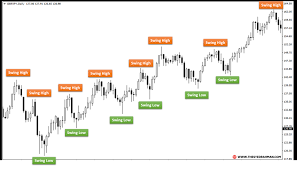As the global economy continues to shift and evolve, reciprocal tariffs have become one of the most debated and strategic tools in U.S. trade policy. Designed to counterbalance unfair trade practices, these tariffs are imposed in response to tariffs placed on American goods by foreign governments. While the idea is rooted in promoting fairness and parity, the broader implications—ranging from economic nationalism to disrupted global supply chains—are far-reaching.
In this article, we explore what reciprocal tariffs are, how the United States is using them, and the ripple effects felt across the global marketplace in 2025.
What Are Reciprocal Tariffs?
At their core, reciprocal tariffs are a form of retaliatory taxation. If a country imposes high import duties on American goods, the United States responds by placing an equivalent or higher duty on imports from that nation. This strategy is meant to deter protectionist behavior and encourage more equitable trade relationships.
For instance, if the European Union imposes a 20% tariff on American beef, the U.S. might retaliate with a 20% (or higher) tariff on EU agricultural or industrial products. The objective is simple: level the playing field.
Read More – Bitcoin Price Target and Latest News With Key Factor
🇺🇸 U.S. Tariff Policy in 2025: A Snapshot
The U.S. has adopted a proactive tariff policy in recent years, targeting countries with imbalanced trade relationships. According to the Office of the United States Trade Representative (USTR), tariffs are primarily used as a bargaining tool in trade negotiations and as a shield to protect key American industries from foreign competition.
Here’s a current snapshot of U.S. tariff rates on major trade partners in 2025:
| Country | U.S. Tariff Range | Key Sectors Affected |
|---|---|---|
| China | 25% – 35% | Electronics, Steel, Textiles |
| European Union | 10% – 20% | Automotive, Agriculture |
| India | 15% – 25% | Pharmaceuticals, Auto Parts |
| Mexico | 5% – 10% | Aluminum, Consumer Goods |
| Russia | 30%+ (Sanctions) | Oil, Metals |
| Brazil | 10% – 15% | Soy, Sugar, Meat |
This data reflects how the U.S. is actively adjusting its tariff strategy based on geopolitical and economic priorities.
Economic Justification for Reciprocal Tariffs
Proponents of reciprocal tariffs in the U.S. argue that these measures:
- Promote fair trade practices.
- Protect domestic industries from being undercut by subsidized foreign goods.
- Reduce the trade deficit by making imports less attractive.
- Strengthen negotiating leverage in trade agreements.
For example, the steel and aluminum tariffs imposed on China and other countries in previous years have reinvigorated the U.S. metals industry, albeit with side effects like increased raw material costs for manufacturers.
Read More – Donald Trump’s Return to Office and Its Impact on Cryptocurrency in 2025
Global Market Reactions and Countermeasures
One of the most significant outcomes of U.S. reciprocal tariffs has been the emergence of retaliatory tariffs from affected nations. In response to U.S. tariffs on goods like steel, aluminum, and agricultural products, countries like China, Canada, and the EU have imposed their own tariffs on American exports.
Notable Reactions:
- China: Levied tariffs on U.S. soybeans, pork, and automobiles.
- EU: Imposed duties on U.S. bourbon, motorcycles, and dairy products.
- India: Introduced reciprocal tariffs on U.S. almonds, apples, and tech products.
These moves have intensified trade tensions, contributing to what economists term as a “tariff tit-for-tat cycle”. This has made it increasingly difficult for global companies to predict costs and plan supply chain logistics.
Impacts on Global Supply Chains
Reciprocal tariffs have forced many multinational corporations to rethink their sourcing strategies. As the cost of importing goods rises due to tariff hikes, companies are shifting production bases to low-tariff or tariff-exempt countries.
For instance:
- Several U.S. electronics firms have relocated manufacturing from China to Vietnam or Mexico.
- Auto manufacturers are reshuffling supply lines to reduce dependency on high-tariff markets.
While this reconfiguration creates opportunities in emerging markets, it also introduces uncertainty and inefficiencies in global trade.
Industry-Wise Breakdown: U.S. Impact
| Industry | Positive Impact | Negative Impact |
|---|---|---|
| Manufacturing | Protected from cheap imports | Higher input costs |
| Agriculture | Short-term support | Long-term export loss due to retaliation |
| Technology | Local job growth (in rare cases) | Increased costs on components |
| Retail | Minimal benefit | Higher consumer prices |
While the manufacturing sector has generally benefited from the protective shield of tariffs, consumer-facing industries like retail and automotive are experiencing price inflation and supply delays.
Global Economic Consequences
Tariff wars don’t just affect bilateral relationships—they have global economic consequences. According to the International Monetary Fund (IMF) and World Trade Organization (WTO):
- Global GDP growth slowed by 0.7% in 2024, largely due to ongoing trade tensions.
- The volume of international trade contracted for the first time in a decade.
- Investment in cross-border infrastructure projects has been delayed or canceled in multiple developing economies.
These statistics underline the fact that protectionism—while politically attractive—often comes with global economic costs.
Are Reciprocal Tariffs Sustainable?
While reciprocal tariffs offer a strategic tool for negotiation, many economists warn against overuse. Excessive reliance on tariffs can trigger long-term instability, reduce consumer purchasing power, and discourage innovation.
That said, if applied surgically and strategically, reciprocal tariffs can balance trade power, especially against dominant exporters with closed domestic markets.
Conclusion: The Balancing Act Ahead
Reciprocal tariffs have reshaped the global trade landscape and strengthened the U.S. position in certain key sectors. However, the long-term success of these measures depends on how they are deployed. The United States must walk a fine line between economic protection and global cooperation.
As we move forward into 2025 and beyond, policymakers must seek to balance national interests with global economic stability, ensuring that America remains competitive without isolating itself from the global marketplace.
Disclaimer
The information provided in this article is for general informational purposes only and does not constitute professional financial, legal, or trade advice. While efforts have been made to ensure the accuracy and timeliness of the content, CryptonTimes.com and its authors make no representations or warranties of any kind, express or implied, about the completeness, accuracy, reliability, or suitability of the information contained herein. Readers are encouraged to consult with qualified professionals for advice specific to their individual circumstances. CryptonTimes.com shall not be held liable for any loss or damage arising from the use of or reliance on this content.






